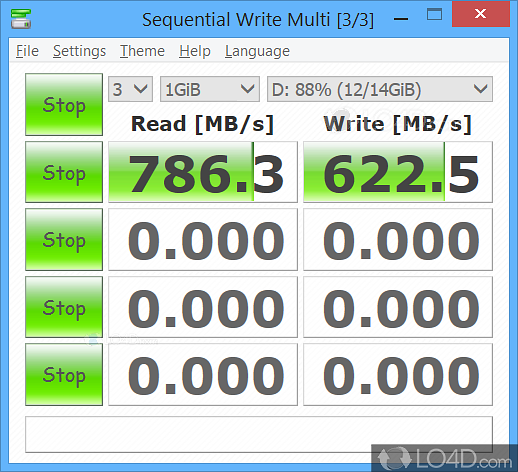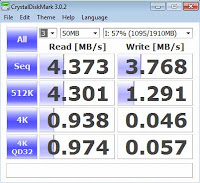
From the Settings menu you can also change the interval time for individual tests. These block sizes, queues and threads can all be changed from the KDiskMark options: Settings -> Queues & Threads. This information is also shown in a tooltip, when hovering your mouse over those buttons. RND means that test measures the random performance instead of sequential. Here, SEQ means sequential, followed by the block size ( 1M), Q means queues and it's followed by the number of queues ( 8), T means threads and it's followed by the number of threads used by the test ( 1 in this example). So what are those letter and numbers shown on the buttons on the left-hand side of KDiskMark? Let's take the first test: SEQ1MQ8T1 as an example. You may also click on a specific test on the left-hand side, to only perform that test (e.g.

To get started, select the disk from the top drop-down (it defaults to the disk holding your home directory), then click on All to perform all the available tests. When you first run the application you'll notice an interface similar to CrystalDiskMark, with 4 disk benchmarking tests, each with read and write columns. It's also worth noting that even though the latest KDiskMark version at the time I'm writing this article is 1.6.2, the application is quite new, having its initial release in the beginning of July 2020. The application can also generate benchmark reports ( File -> Save) that you can use to easily share the benchmark results with others, and for future comparisons.ĭespite its name (starting with K), this Qt5 application does not have any KDE-specific dependencies, so you can install it no matter what desktop environment you're using without having to install a large number of dependencies.


Under the hood, it uses FIO (Flexible I/O Tester), and it features configurable block size, queues, and threads count for each test. KDiskMark comes with a simple user interface, very similar to the one used by CrystalDiskMark, with presets. KDiskMark is a free and open source alternative to CrystalDiskMark (which is Windows only) for Linux, a GUI HDD / SSD benchmarking software.


 0 kommentar(er)
0 kommentar(er)
